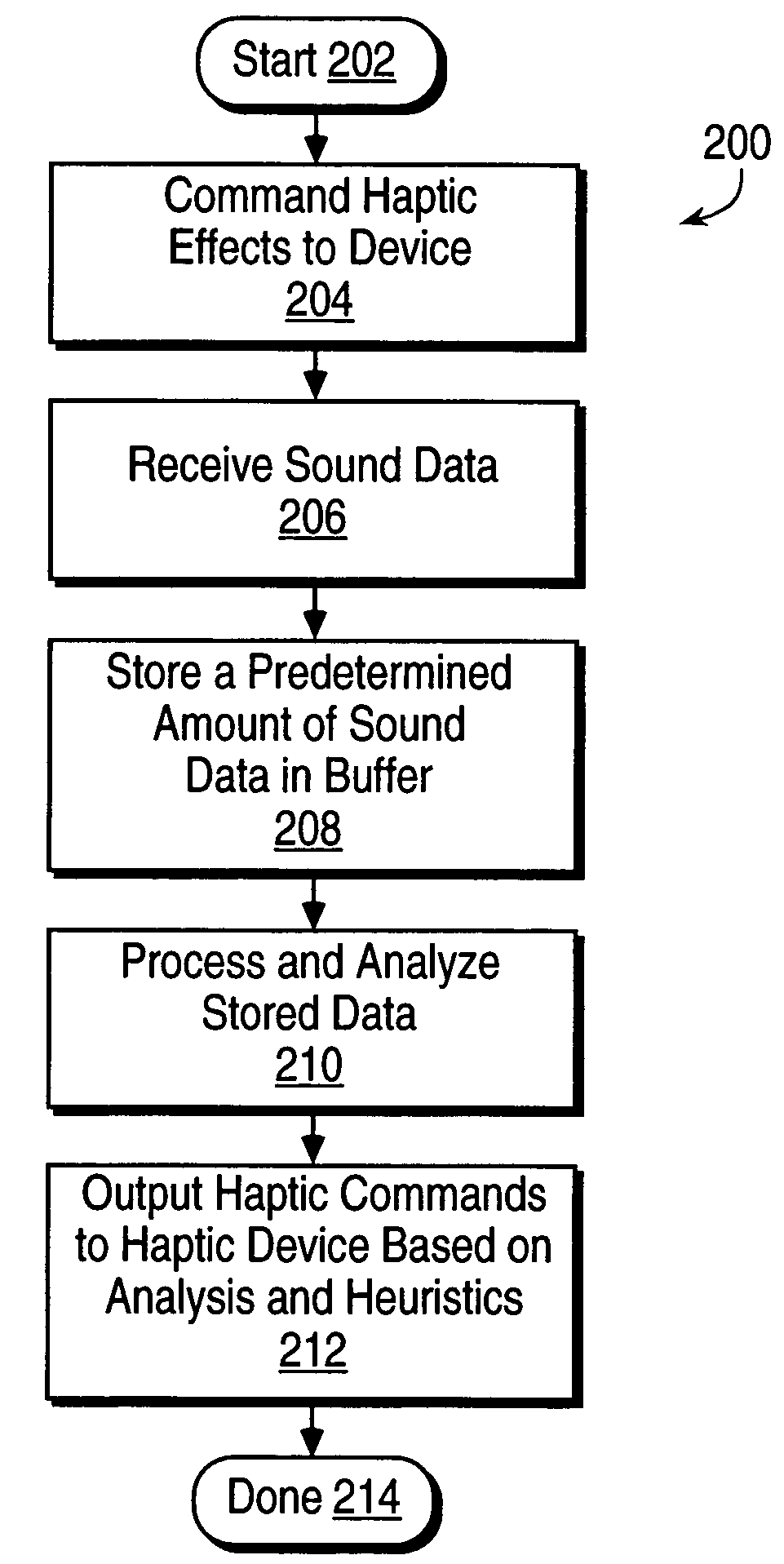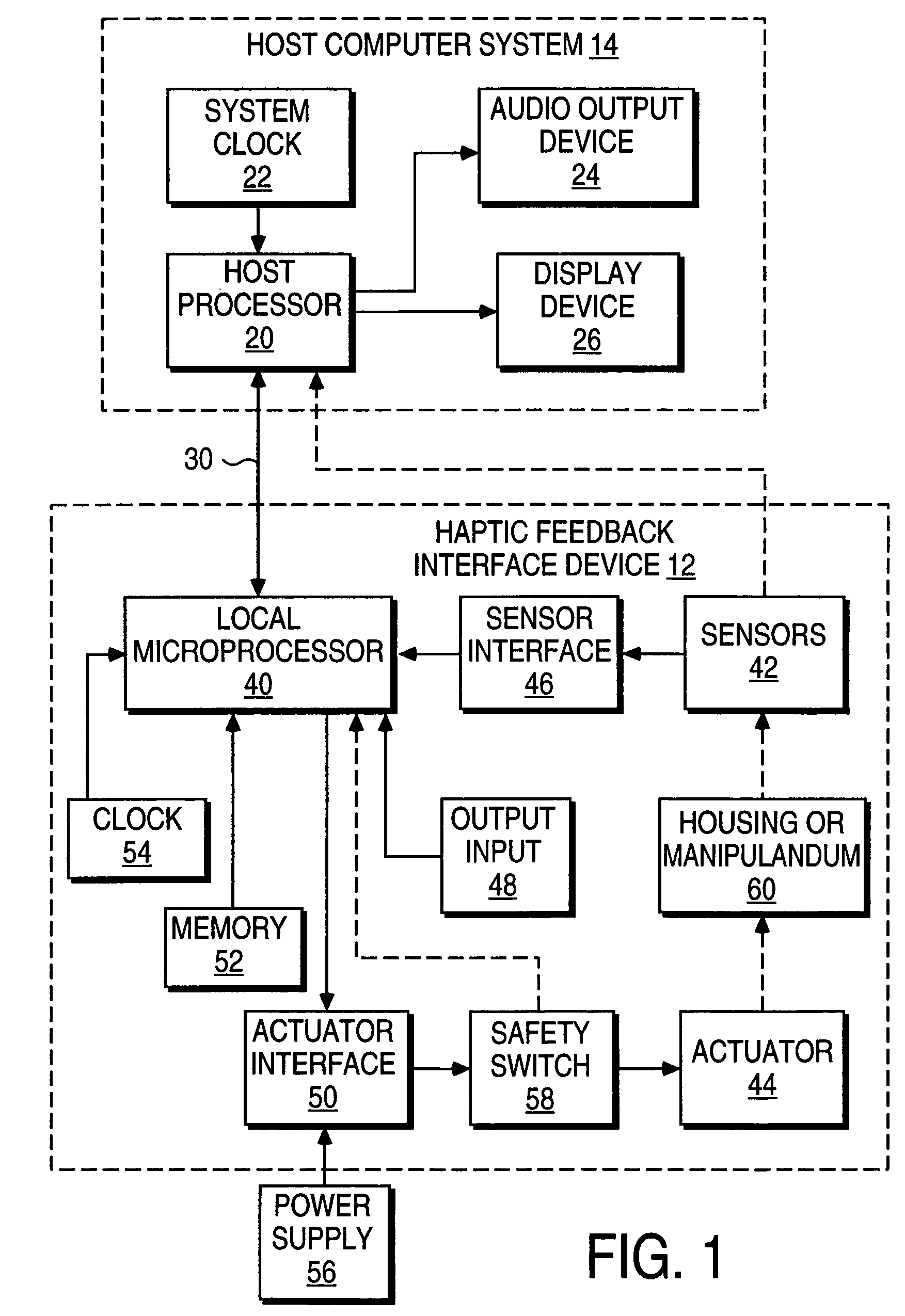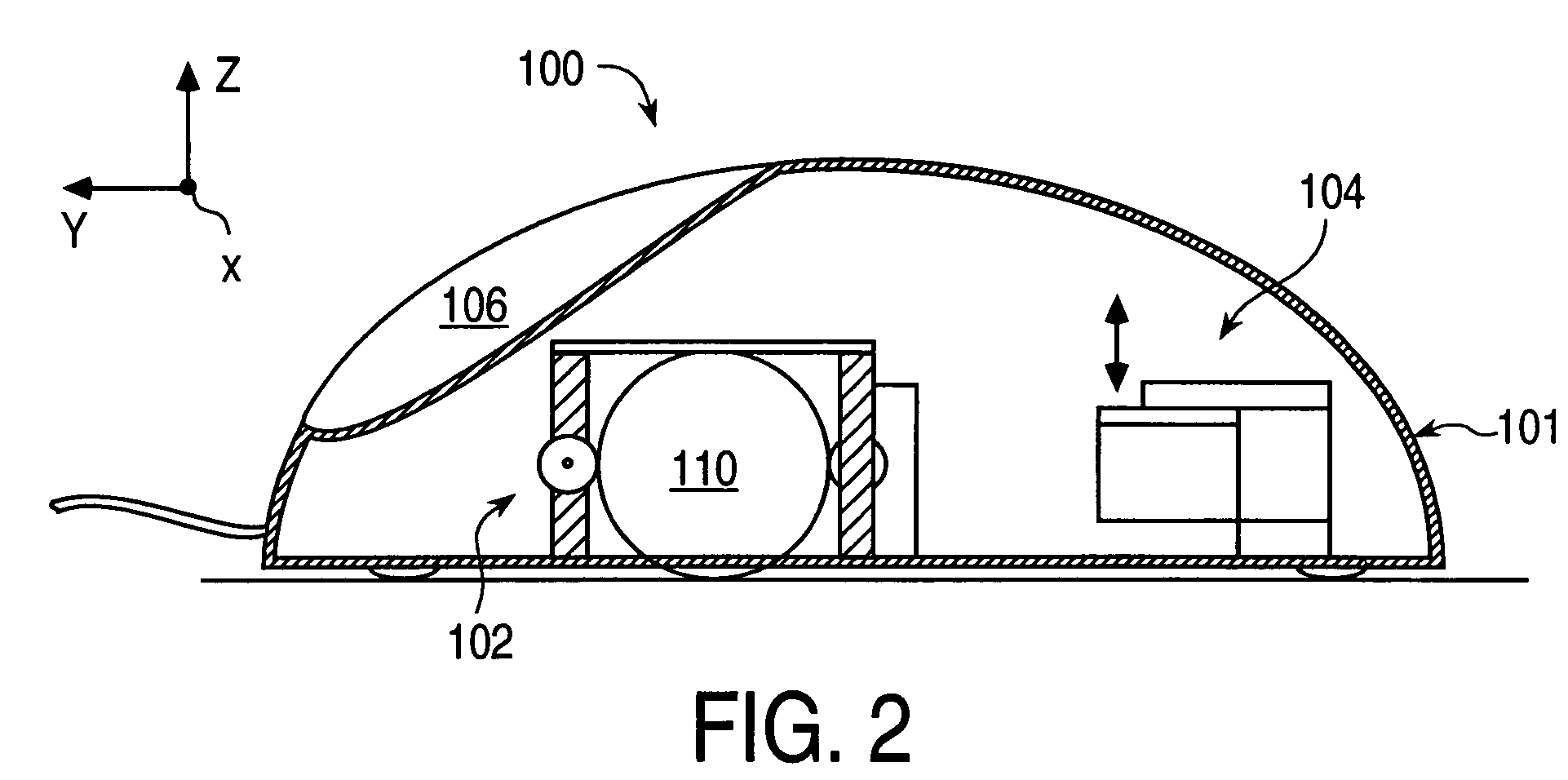Haptic feedback sensations based on audio output from computer devices
a technology of audio output and haptic sensation, which is applied in the direction of static indicating devices, instruments, sport apparatus, etc., can solve the problems of undesirable or disconcerting haptic sensation output, no evaluation or processing of sound signals, simple effects of haptic sensations, etc., and achieve the effect of improving user experien
- Summary
- Abstract
- Description
- Claims
- Application Information
AI Technical Summary
Benefits of technology
Problems solved by technology
Method used
Image
Examples
embodiment 100
[0032]FIG. 2 is a side cross-sectional view of a mouse embodiment 100 of device 12 for use with the present invention.
[0033]Mouse device 100 includes a housing 101, a sensing system 102, and an actuator 104. Housing 101 is shaped to fit the user's hand like a standard mouse while the user moves the mouse in the planar degrees of freedom and manipulates the buttons 106. Other housing shapes can be provided in many different embodiments.
[0034]Sensor 102 detects the position of the mouse in its planar degrees of freedom, e.g. along the X and Y axes. In the described embodiment, sensor 102 includes a standard mouse ball 110 for providing directional input to the computer system. Alternatively, an optical sensor or other type of sensor can be used.
[0035]Mouse device 100 includes one or more actuators 104 for imparting haptic feedback such as tactile sensations to the user of the mouse. Actuator 104 is coupled to the housing 101 to provide haptic feedback to the user. In one embodiment, t...
embodiment 210
[0063]FIG. 5 is a flow diagram illustrating a different embodiment 210′ of step 210 of FIG. 3, in which the sound data stored in the buffer is processed and analyzed. The method starts at 290, and in step 292, a Fast Fourier Transform (FFT) is performed on the sound data to filter the data into different frequency components of the data's frequency spectrum. The frequency components each span a frequency range based on the number of components output by the FFT and the entire frequency range covered. For example, if the FFT has 512 outputs, and the entire frequency range of the sound data is about 22 kHz, the each FFT output frequency component has a frequency range of 22 kHz / 512=about 43 Hz. These frequency components can then be grouped to sum to desired frequency ranges. For example, to achieve the five frequency ranges similar to the embodiment ofFIG. 4, four components can be combined to cover the first frequency range of 0-170 Hz, 6 components cover the range 170-430 Hz, 37 co...
PUM
 Login to View More
Login to View More Abstract
Description
Claims
Application Information
 Login to View More
Login to View More - R&D
- Intellectual Property
- Life Sciences
- Materials
- Tech Scout
- Unparalleled Data Quality
- Higher Quality Content
- 60% Fewer Hallucinations
Browse by: Latest US Patents, China's latest patents, Technical Efficacy Thesaurus, Application Domain, Technology Topic, Popular Technical Reports.
© 2025 PatSnap. All rights reserved.Legal|Privacy policy|Modern Slavery Act Transparency Statement|Sitemap|About US| Contact US: help@patsnap.com



